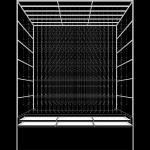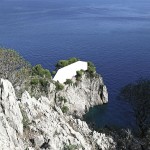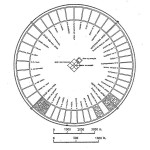
“Ground Floor Crisis” is one of the projects exhibited during the 14th Venice Architecture Biennale of 2014. The work, developed by Matteo Ghidoni with Campomarzio, Pool, Salottobuono and The Ship is featured in the Monditalia section and aims at associating two apparently distant phenomena: the Italian economic / real estate crisis and the flooding of major cities in the recent past. “Both phenomena, despite their different natures, affect the ground floors of Italian cities: they reveal the cities’ vulnerabilities but they contribute, at the sale time, to redesign their configurations. They offer us a completely new palimpsest that is worth to try and rewrite” (Matteo Ghidoni interviewed by ATP Italia – transl. by Socks).

The effects of the recent economic and real-estate crises can be perceived in the radical transformation of the ground floors of Italian cities. As commercial enterprises struggle, the built volume is under-utilized and housing is replacing tertiary and specialized functions. These phenomena recount the rupture that has occurred in the delicate relations of coexistence at ground level.
The flood that hit Florence and Venice on November 4, 1966, generated a tabula rasa in both spatial and temporal terms. The sudden short circuit provoked by the inundation of historic centers revealed the intrinsic fragility of the ground floor, raising new and urgent questions about modern approaches to the preservation of cultural heritage. Any discourse on the uses and modifications of architecture within Italian cities is still largely influenced by the debate that ensued.
Coincidentally, 1966 was also the year in which both l’Architettura della città and Complexity and Contradiction in Architecture were published. The renewed interest in the form of the city reflected in these texts marked a radical shift—at least from a theoretical standpoint—in the linear and once apparently inexorable trajectory of modern architecture.
If we momentarily set aside the catastrophic nature of alluvial events, we can engage with the unusual image of urban form that they generate. The ever-more-frequently amphibious condition of Italian cities erases filters and spatial sequences, and redefines the articulation of the boundaries between interiors and exteriors, between the public and private realms. Water acts as a catalyst: it provides us with a detailed diagnosis of the current condition of the city.
While post-flood accounts and inventories of damage yield an accurate image of the ground floor’s usage, the section plane of the water level redraws its architectural substance. Encountering both monuments and minor buildings, and both public spaces and more intimate ones, it abolishes hierarchies, elucidates formal richness, and reveals a palimpsest that must be completely rewritten.
The project uses the ground floor, the space articulating the relations between inside and outside, the public and the private dimension, as a theoretical device to reveal the socio-economical changes happening in Italy: “the volatility of the sales, privatization or regimentation of the common areas, the replacement of the tertiary and specialized activities with residential premises“. The theme of the floodings (and their increasing frequence) adds a further level to the analysis: as water blurs the boundaries between inside and outside, it is able to return a diagnosis of the current state of the city.











ma che è sta marchetta? siete amici di ghidoni e vi ha offerto un paio di birre perchè nessuno parlava della sua panzana alla biennale?
Vasco, non siamo amici di Ghidoni e parliamo sempre di quello che ci interessa.